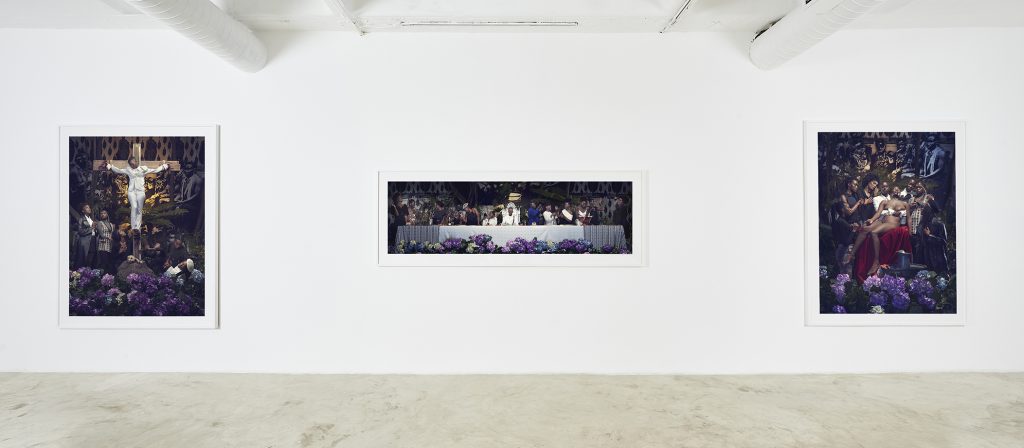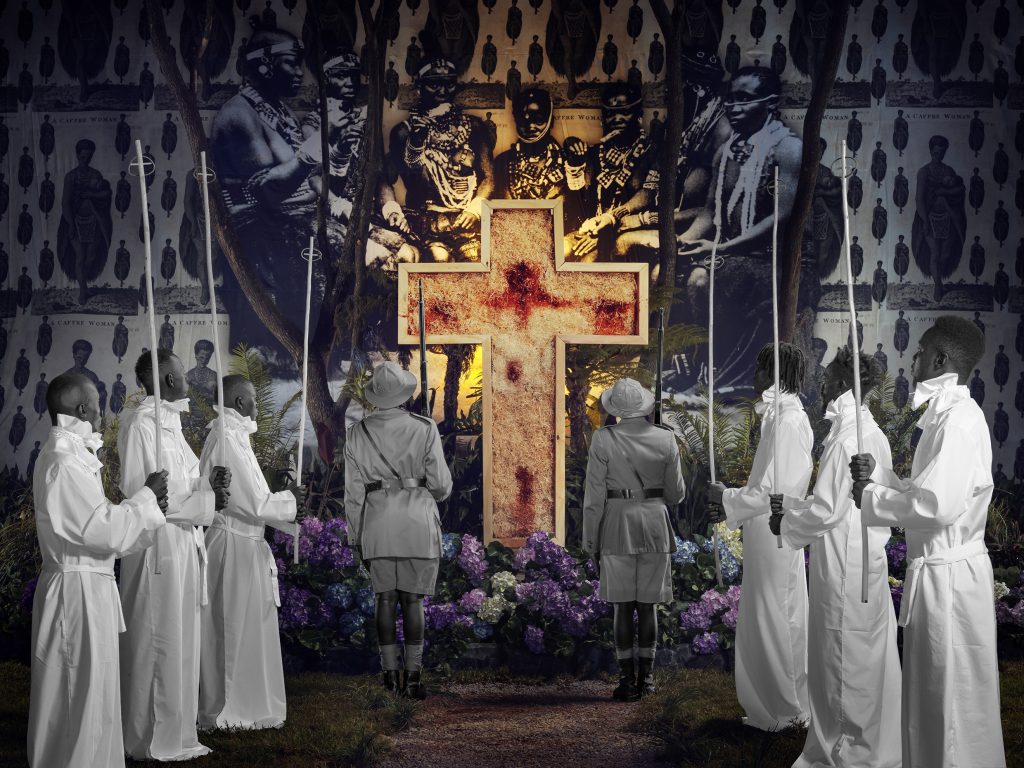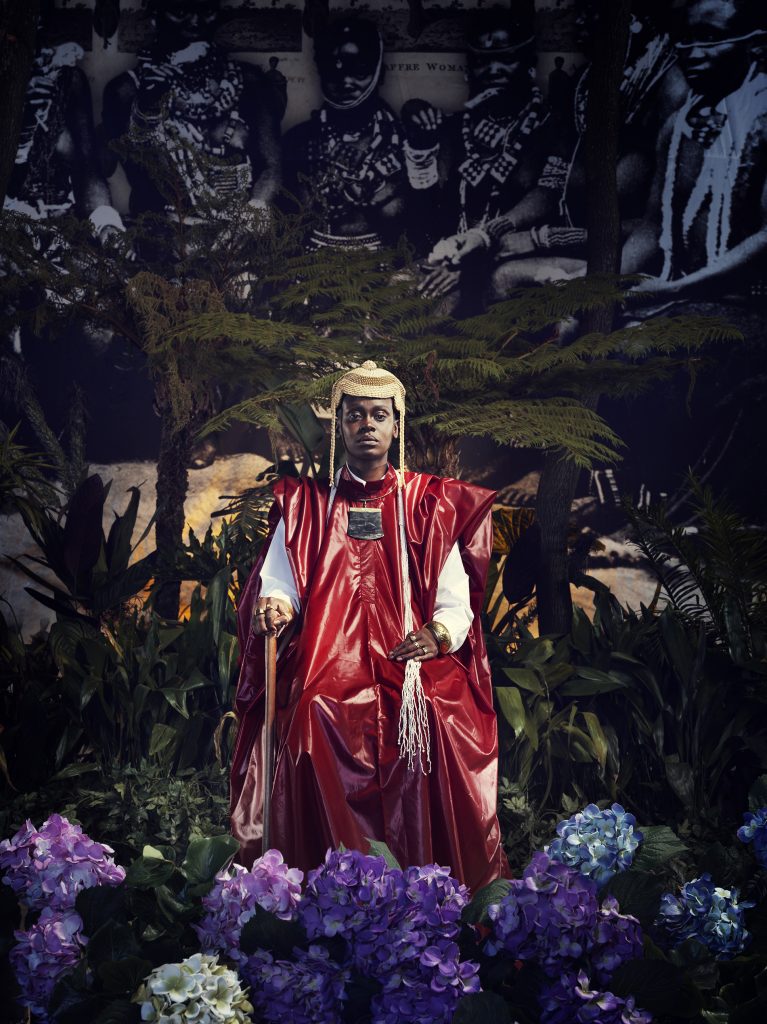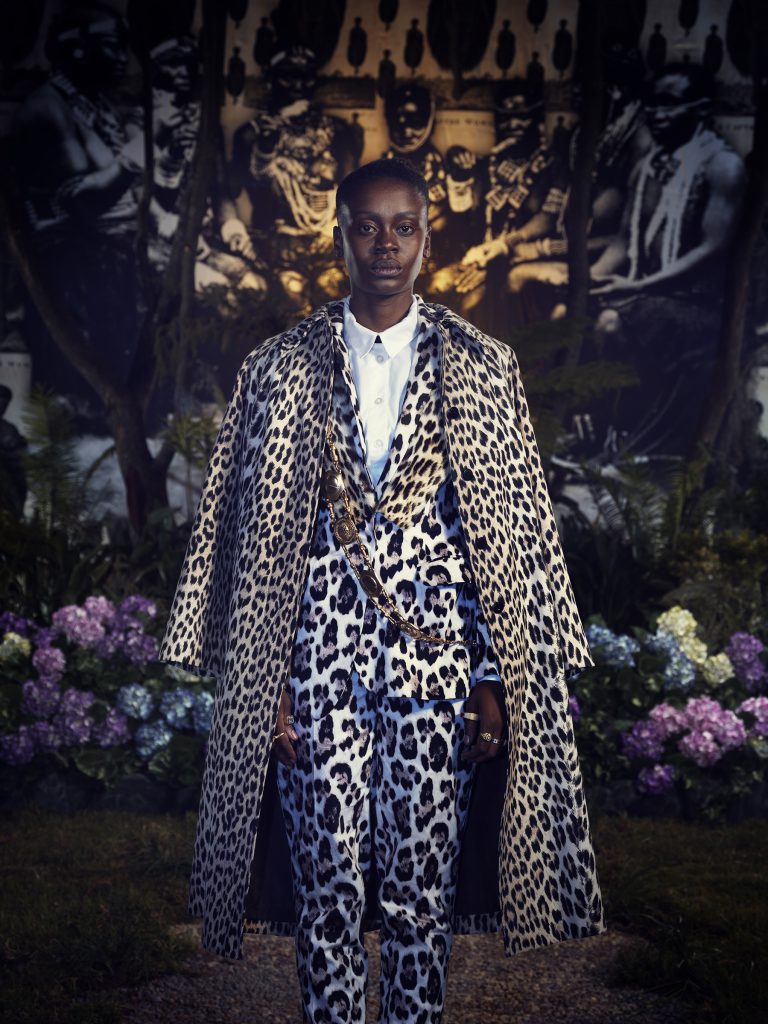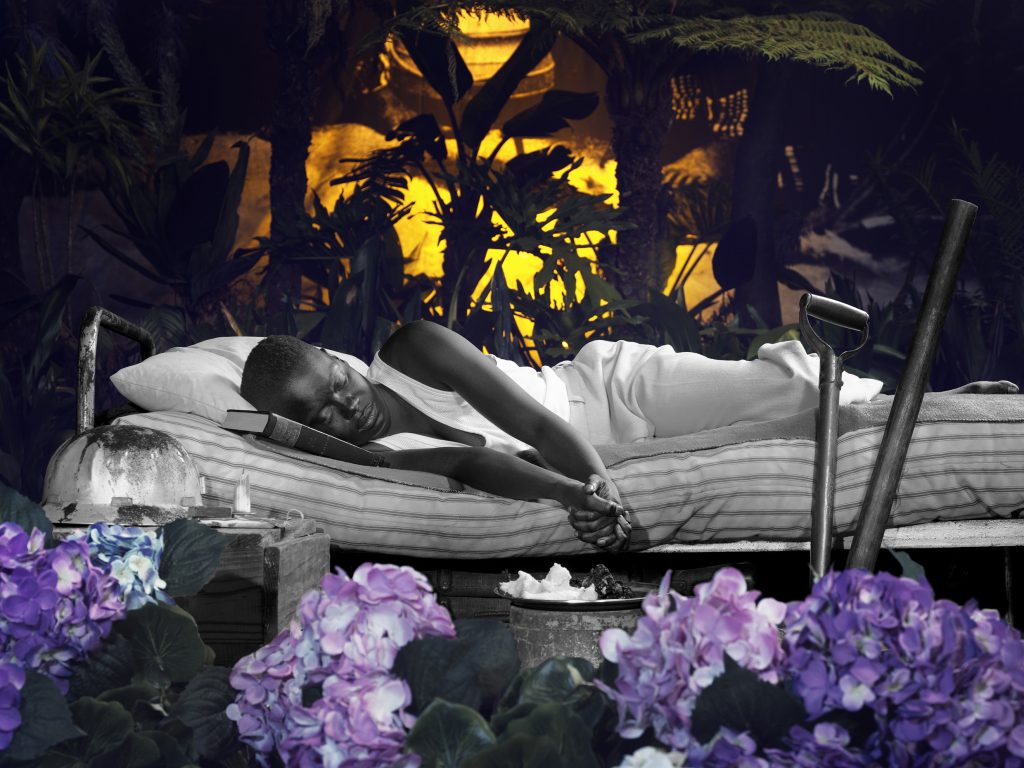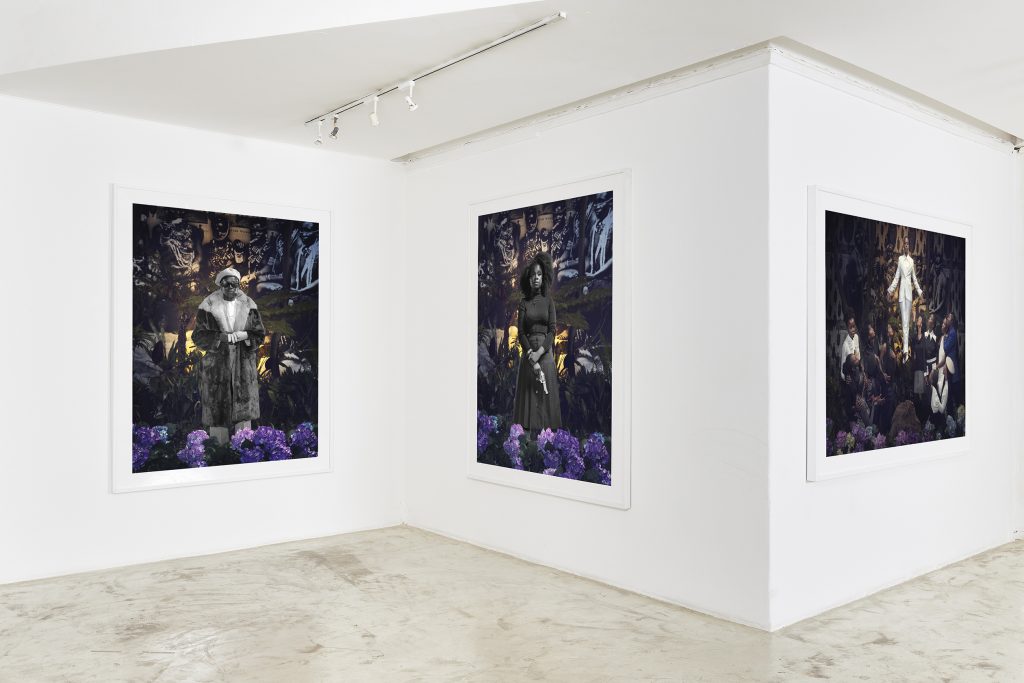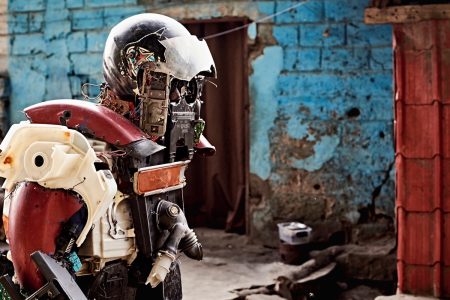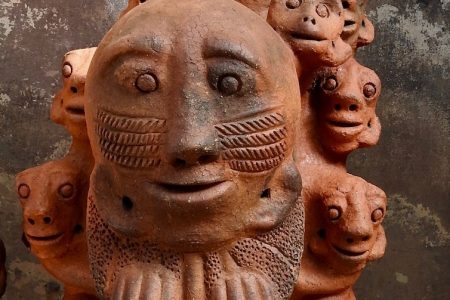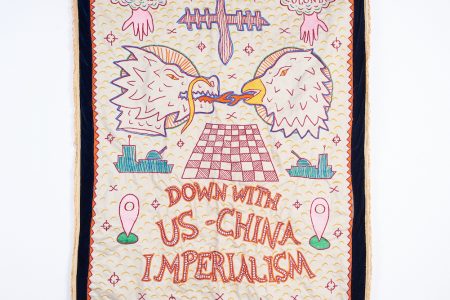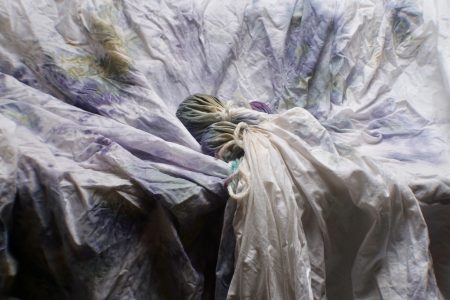Kudzanai Chiurai – Directing Memory
Kudzanai Chiurai works on alternative histories play out in Zimbabwean artist Kudzanai Chiurai’s elaborate scenes.
For Zimbabwean artist, Kudzanai Chiurai, all art is political. Born in 1981, one year after Zimbabwe gained its independence from British rule, his recent work is concerned with the lingering effects of colonialism on contemporary African society and politics. In his body of work, “We Live in Silence,” Chiurai attempts to interrogate and disrupt the post-colonial story. “Self-determination which was significant to the liberation movement and pan-African thinking is not part of the post-colony,” he says, “so the colonial future only describes the current state of nations.” He combines histories, both real, untold and imagined, to offer a counter-narrative and asks what a different past would look like in the future.
In “We Live in Silence,” Chiurai is the director of elaborately staged tableaus wherein a black cast plays out scenes from his version of events. Religious occurrences like the last supper and the crucifixion of Christ are reinterpreted through his lens; their inclusion a reminder of religion’s starring role in colonisation. Other scenes are borrowed from European art history except in Chiurai’s depictions the central characters are African. Most notably, black women portray the roles of religious icons or liberation leaders; the artist’s attempt at correcting the erasure of black female protagonists in these narratives. “Missionaries took an active role in reshaping the family to reflect the Anglo-Saxon ideals of what a family should be and within the context of a church what the role of women should be,” Chiurai says. “The importance of women in the work also challenges how we speak about women in the liberation struggle for independence. They appear as a footnote to the black masculine narrative of African history and liberation.”
In “We Live in Silence,” time is not linear. Using backdrops of archival anthropological photography of African societies, Chiurai emphasises the consequence of the past on the present and future; in his scenes all three merge at one moment in time. As in life, they’re impossible to separate.
Chiurai sees his latest work as an alternative bible and another history to give his 16-year-old self as a departure point for imaging what the future of Africa could have been.
